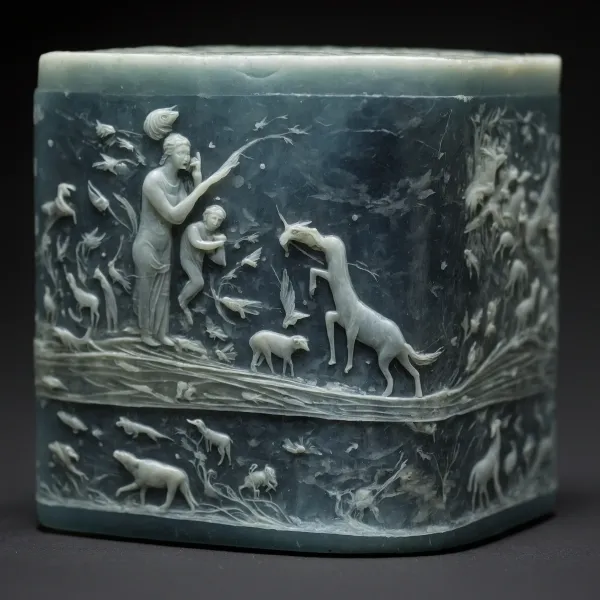Illuminated Whispers

The luminous creation by Orla Verity, titled Luminance of Souls, captures the essence of light and shadow in an elegant dance. Crafted in 1932, during the waning days of the Art Deco movement, this piece straddles the realms of functionality and artistry with masterful precision. Its striking orange hue invites viewers to embark on a journey beyond mere aesthetics—challenging perceptions about life, death, and what lies beyond.
Verity’s work resonates within contemporary discussions about spirituality and existence. This lamp stands apart not only for its intricate design but also for the whispered tales threaded through its history. A story woven into its very foundation transforms it from an ordinary object into one that evokes curiosity about guardianship and spiritual integrity.
The mystique surrounding Luminance of Souls centers on an uncanny event—the fateful night when Elysia, a devoted guardian sworn to protect profound artifacts, became incomprehensibly entwined with this peculiar object. Legend has it that Elysia stumbled upon Verity's creation in a quaint antique shop nestled deep within a fog-laden bayou—a place rife with echoes from countless souls past.
Compelled by an unseen force, she brought the lamp home, where strange phenomena began to unfold each nightfall. Shadows flickered longer than usual; whispers danced through her rooms like fleeting breezes laden with secrets. As Elysia sat enthralled by the glow emitting from beneath its domed shade, she discovered a methodical rhythm hidden within the shadows—a heartbeat resonating between two worlds.
One evening illuminated by shimmering starlight, Elysia reached toward Luminance of Souls, awakening dormant energies that surged forth like cascading waves. The lamp trembled slightly as laughter echoed softly around her—laughter tinged with both mischief and sorrow—but undeniably human: spirits arising from their eternal slumber to share their wisdom gathered over lifetimes.
Unnerved yet curious, Elysia realized these spirits had stories bottled up within them; they conveyed messages filled with lessons waiting for ears willing to listen. Each encounter transformed her perspective on mortality—no longer just preserving relics but facilitating connections between those dwelling above earth’s surface and those who have traversed beyond it.
As weeks unfolded into months under candle-lit nights, Elysia spent time conversing with wayward souls whose laughter rang through lonely hallways. The ancient duty morphed into something far more significant than anticipated: harmony prevailed among myriad lives seeking closure or companionship across ethereal barriers.
"This intricate interplay between light and darkness reminds us all that our legacies do not fade; instead, they weave through history eternally," says Professor Dalton Orelenko, expert in modern art theory.
Today, audiences approach Luminance of Souls not merely as decor but as an invitation—to consider life after life alongside layers meticulously crafted. It bridges unseen horizons, forever whispering meaningful truths underneath gleaming surfaces, urging every beholder to ignite soulful awareness.




